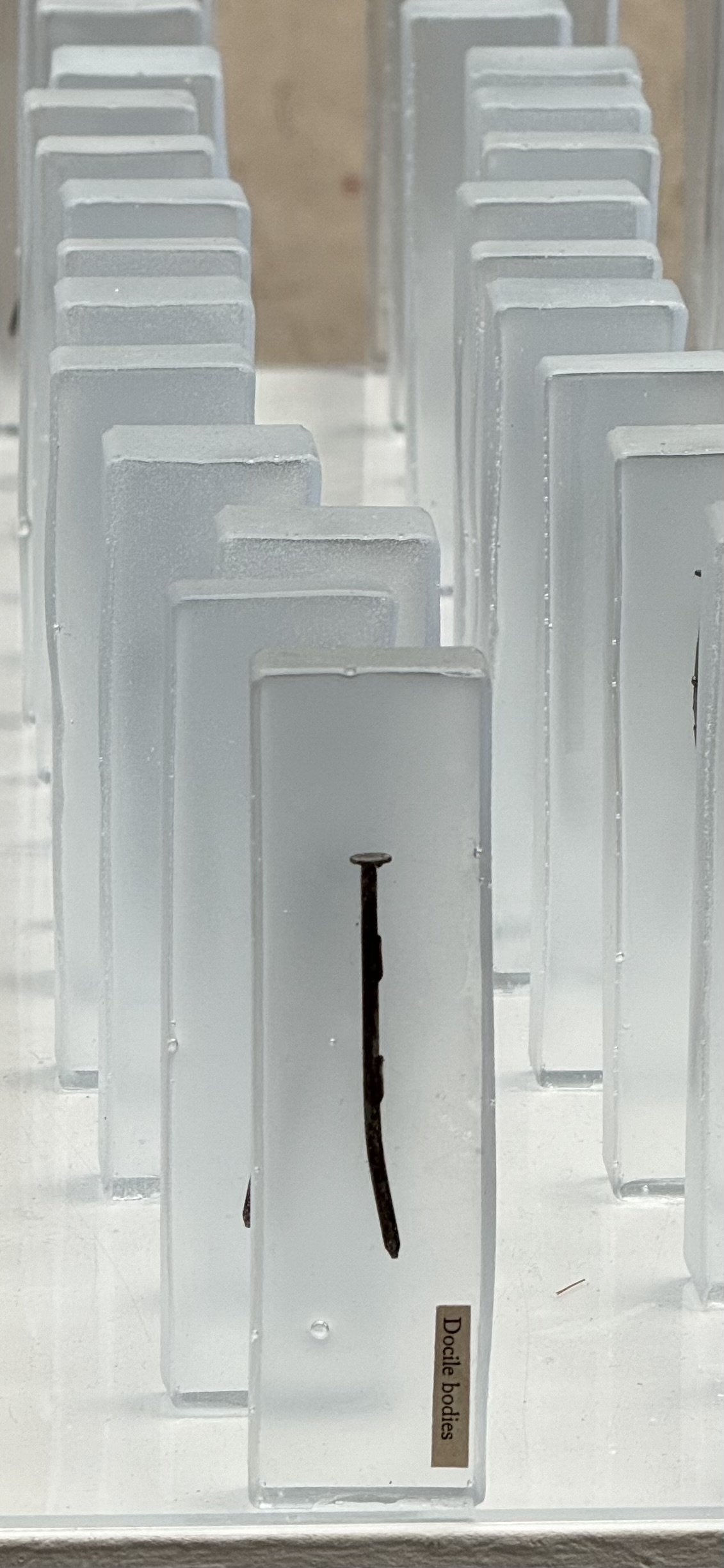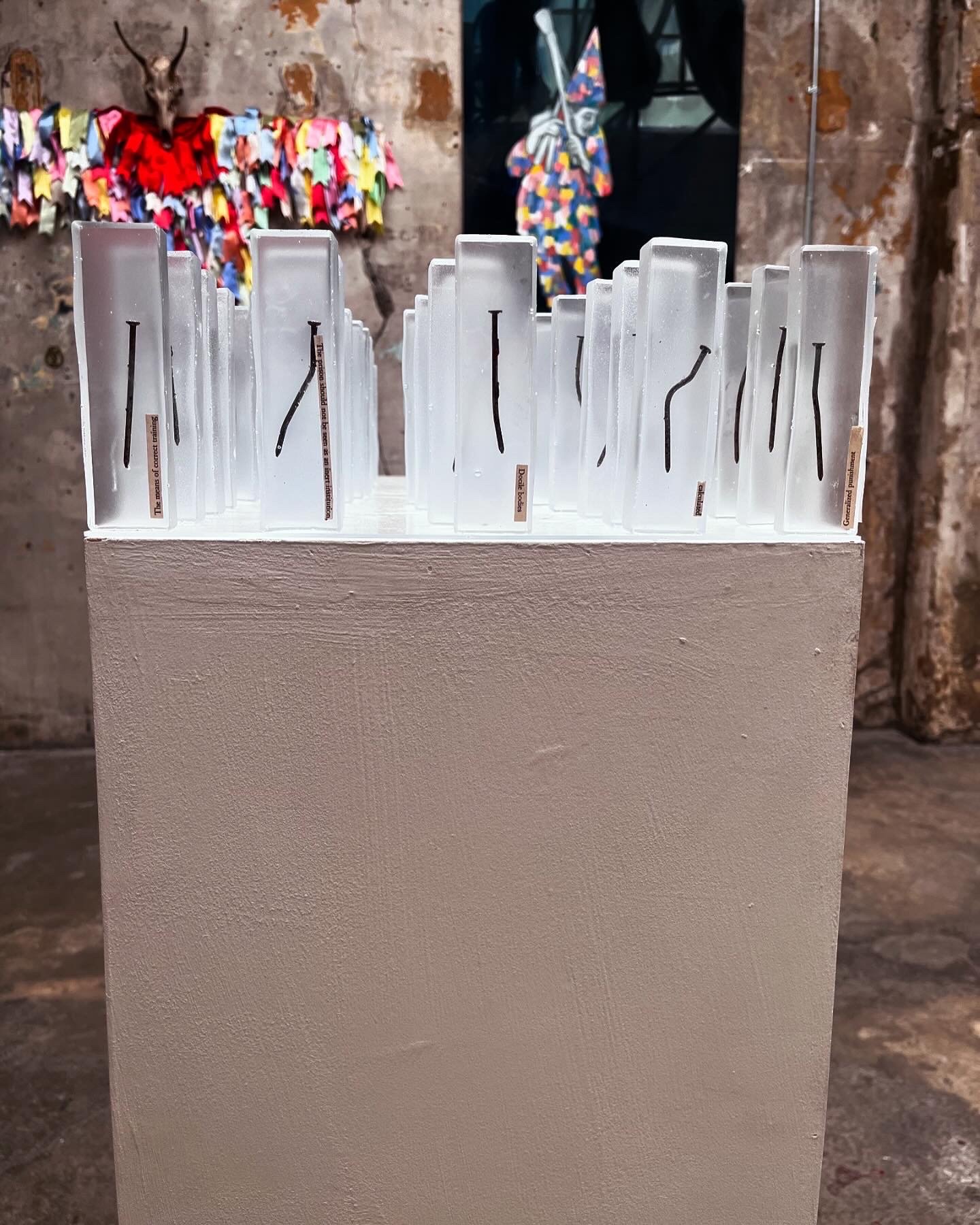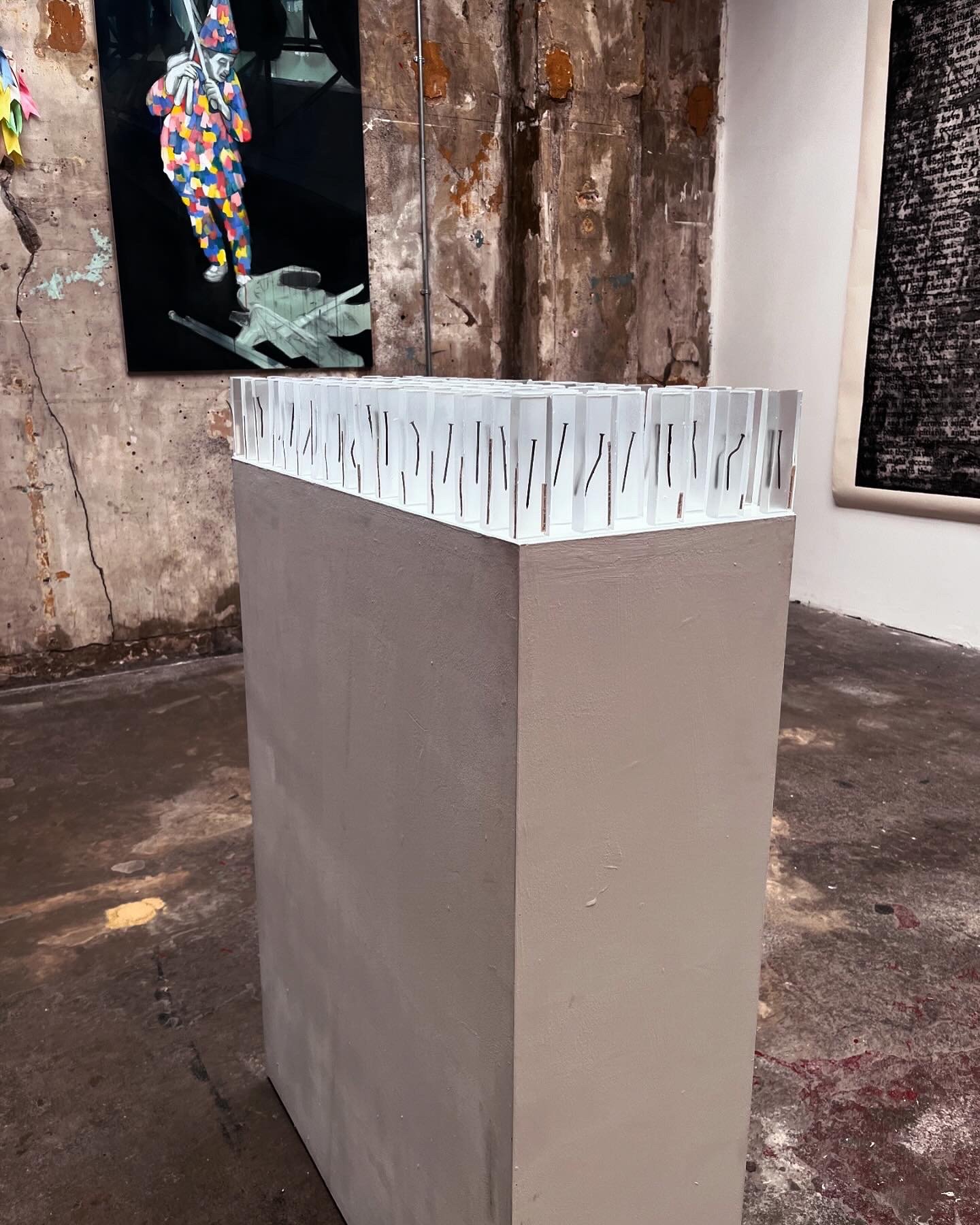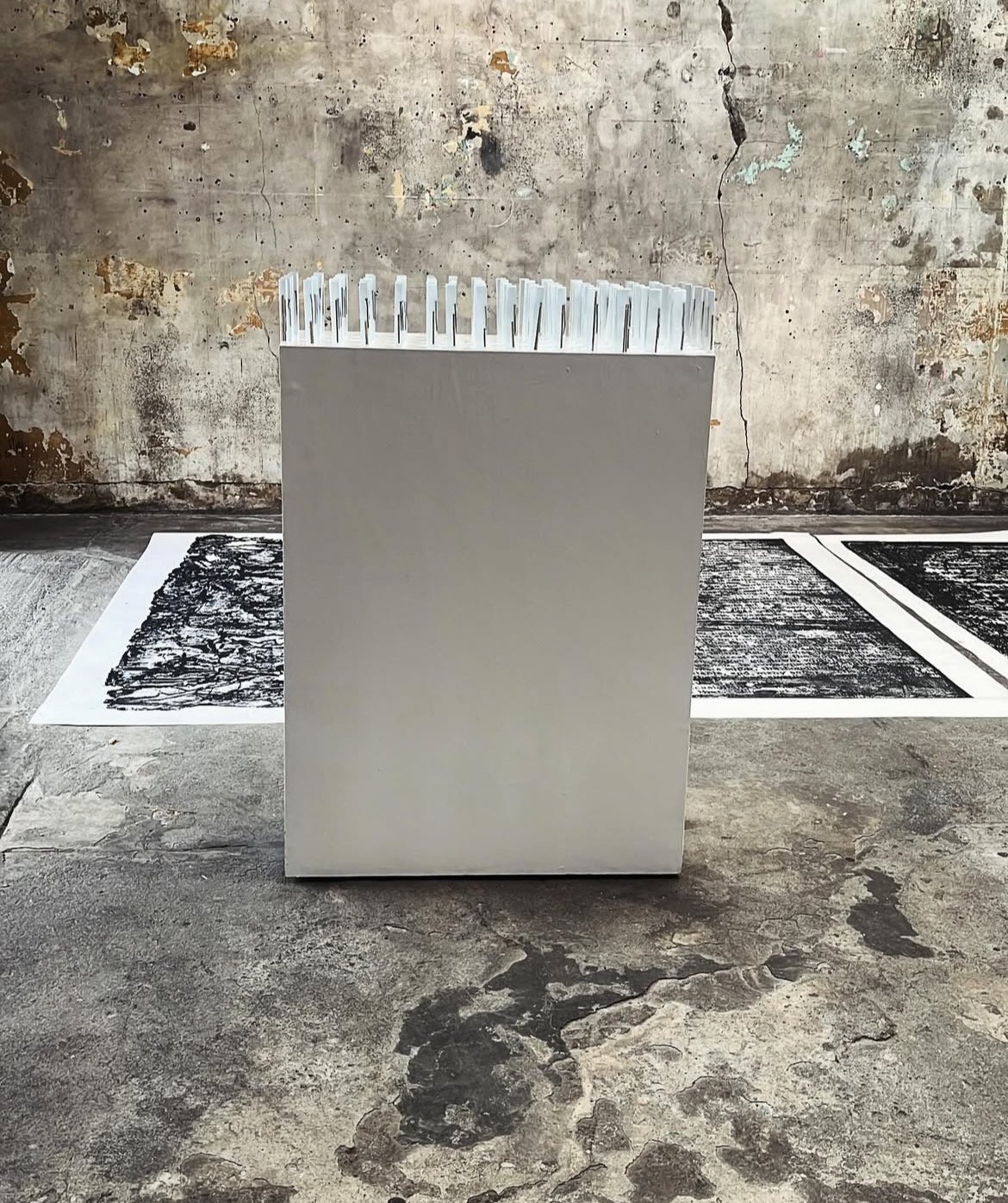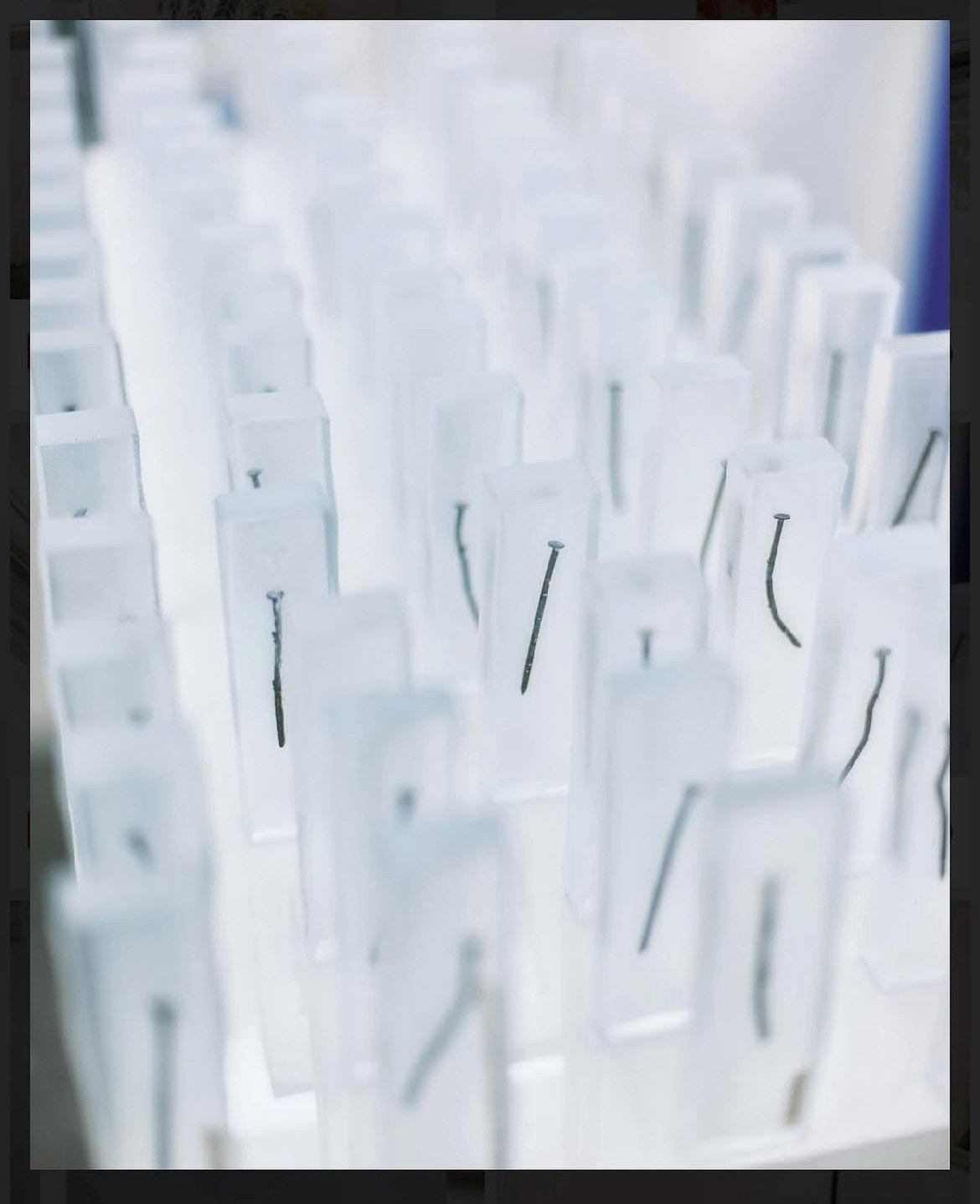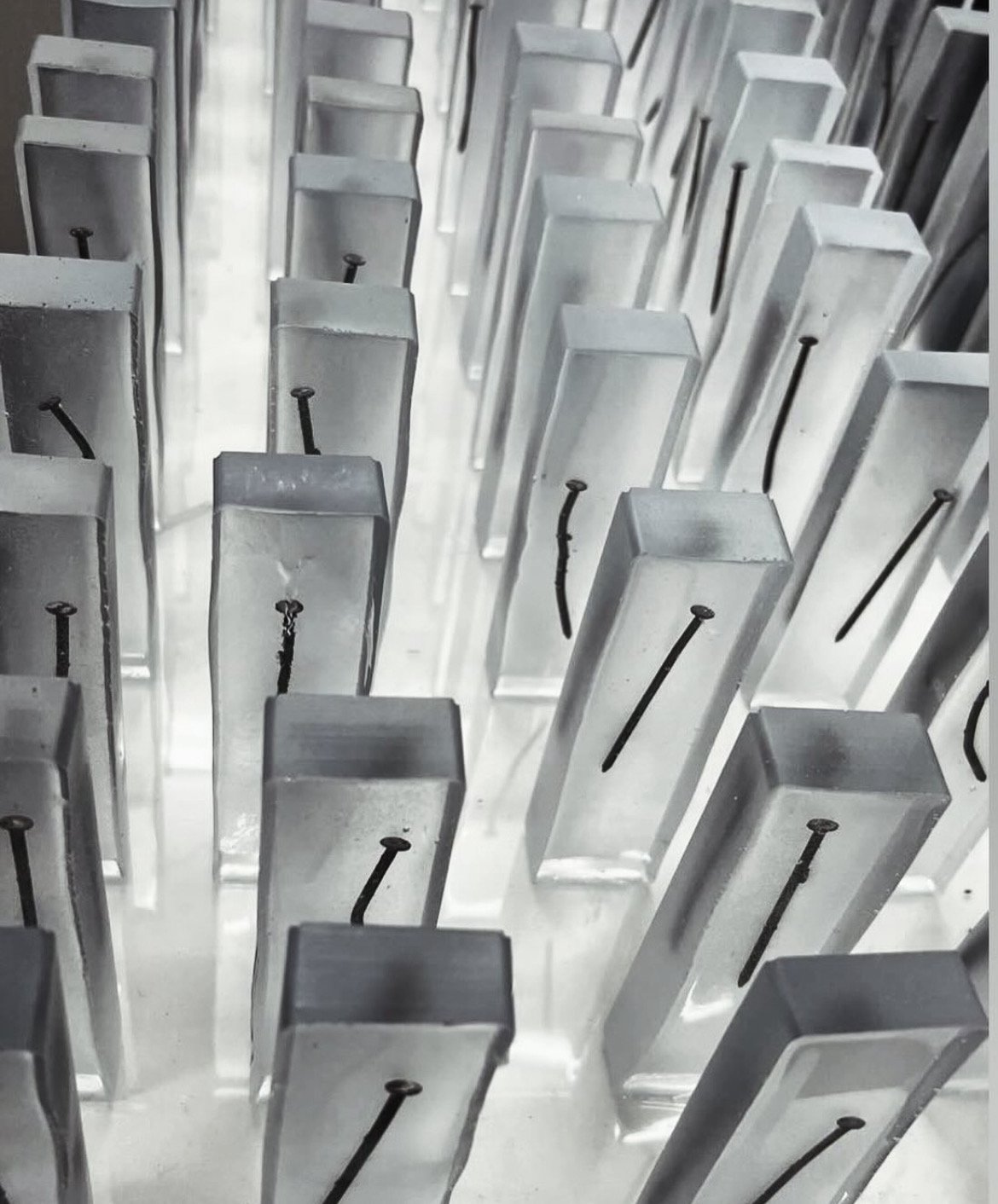Docile Bodies
This work draws on Michel Foucault’s Discipline and Punish, where the term “docile bodies” describes individuals shaped through systems of surveillance, training, and control — made compliant, useful, and efficient.
Each cast in this grid holds a single bent nail, suspended like a relic, stripped of its function. Along the sides of these blocks run excerpts from Foucault’s original text — fragments of theory embedded in the very architecture of the piece. The effect is both literal and metaphorical: the language of discipline inscribed into each form.
The nails, once industrial tools, now resemble bodies — rigid, damaged, bowed under invisible forces.
But no two are the same. Their individuality persists through crookedness, imperfection, quiet defiance.
Docile Bodies asks us to consider:
– How is power made visible?
– How do institutions sculpt the body?
– And where, in the midst of control, might resistance live?e
I“Punishment, then, will tend to become the most hidden part of the penal process. This has several consequences: it leaves the domain of more or less everyday perception and enters that of abstract consciousness; its effectiveness is seen as resulting from its inevitability, not from its visible intensity; it is the certainty of being punished and not the horrifying spectacle of public punishment that must discourage crime; the exemplary mechanics of punishment changes its mechanisms. As a result, justice no longer takes public responsibility for the violence that is bound up with its practice.”
― Michel Foucault, Discipline and Punish: The Birth of the Prison
